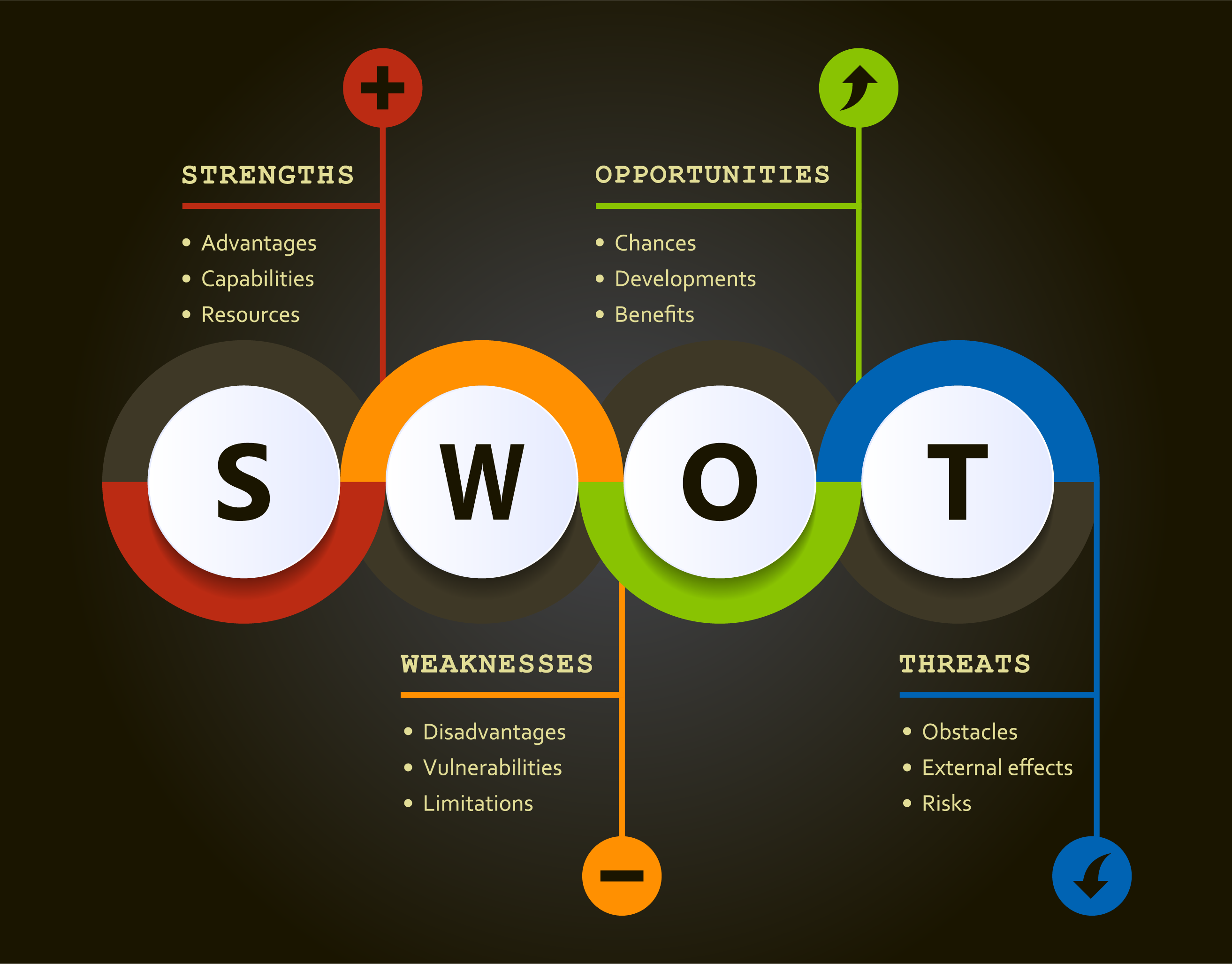Strengths, Opportunities, Threats, and Weaknesses Analysis
# MarketingStrategies

Strengths, Opportunities, Threats, and Weaknesses Analysis
Hi, everyone.
I am thrilled to provide you with an overview of one of my favorite marketing and business strategy tools, the Strengths, Weaknesses, Opportunities, and Threats, i.e., the SWOT Analysis Tool.
Simply put, a SWOT analysis provides a means to assess your organization and its current position in the marketplace. A properly constructed SWOT can effectively evaluate your company’s product or service and how it is positioned against other competitors.
The SWOT identifies internal forces, i.e., strengths and weaknesses, and the external forces, i.e., opportunities and threats. These factors can influence the growth — or conversely — inhibit the expansion of your organization.
Completing a SWOT analysis is straight forward exercise. However — as with most effective business tools — it can reveal hidden gems and insights about the current state of your business and allow for ways to improve and sustain it.
A practical SWOT analysis will evaluate the forces — both good and bad — that affect the influence and effectiveness of your product or service. This analysis can assist with providing your clients with an improved product or service, a better Customer Experience (CX), and assist in determining avenues to grow your organization.
Considerations when Completing Your SWOT Analysis
Factors for consideration that make up the SWOT analysis may include:
- An evaluation of your product or service and how it ranks against competitors.
- The purchasing behavior of your customers.
- Factors that set your organization apart in the marketplace.
- The influence of forces outside of the organization’s control, i.e., government mandates and regulations and current economic conditions.
- Forecasts for identifying changes in the competitive landscape.
When you move forward to complete each section of the SWOT Analysis, please keep the following points in mind:
- Identify at least three or more factors for each section of the SWOT. Gong to this depth of evaluation will help assure an effective analysis.
- Be brutally honest. Sugar coating your answers to the question posed in this analysis will only continue to disguise issues that may not be overly apparent and could detriment your organization’s continued growth and sustainability.
- Don’t use verbs when crafting your evaluations for the analysis. The purpose of the SWOT is to lay the groundwork to identify the forces influencing each of the four areas of the analysis, not to provide actions that the business needs to take to address these areas. That’s determined later in the Marketing Analysis.
Crafting the Four Components of a SWOT Analysis
Strengths
Strengths are internal factors that make your company stand apart from the crowd. These qualities differentiate your organization from your competitors and can include the importance of the value proposition your business offers to clients, the effectiveness of sales or marketing strategies, or the thoroughness of your CX offering.
Weaknesses
Weaknesses are internal factors inhibiting your organization’s growth. Remember I wrote about being brutally honest? Identifying weaknesses is the area of the SWOT where you need to do so.
Identifying weaknesses may require you to evaluate your organization from an outward-in perspective. Looking at your organization through the lens of your customer is a great way to see where faults lie and the improvements that need to be made to provide a better service or product offering or improve the company’s CX.
Opportunities
Opportunities are external factors that you can leverage to grow and sustain your company. Government and market influences can be poised to be significant factors here and affect all players in the marketplace. Managing opportunities offered by this ever-changing landscape can reveal unforeseen opportunities for your organization’s product or service. These factors may also provide openings for developing a new product or service.
Threats
Threats are external factors that can negatively impact your business. Unlike opportunities, threats may harm your organization. Like opportunities, these can include government and market influences that will affect all players in the marketplace. Threats may also constitute new players entering the market or competitors bringing a new or improved product or service offering.
As I mentioned earlier, the SWOT may appear to be a simple exercise but can be a very effective tool to identify ways to help grow and sustain your business.
You may wish to take a deep dive with a thorough SWOT analysis once a year. However, with changing market conditions and competitive landscape, it would be prudent to continually review the analysis to see if any of your original assumptions may have changed and require updating.
I hope you can see the benefits of running through this SWOT analysis on your business.
If you have any comments or would like to respond to this post, please feel free to do so. I would love to receive your thoughts and feedback.
